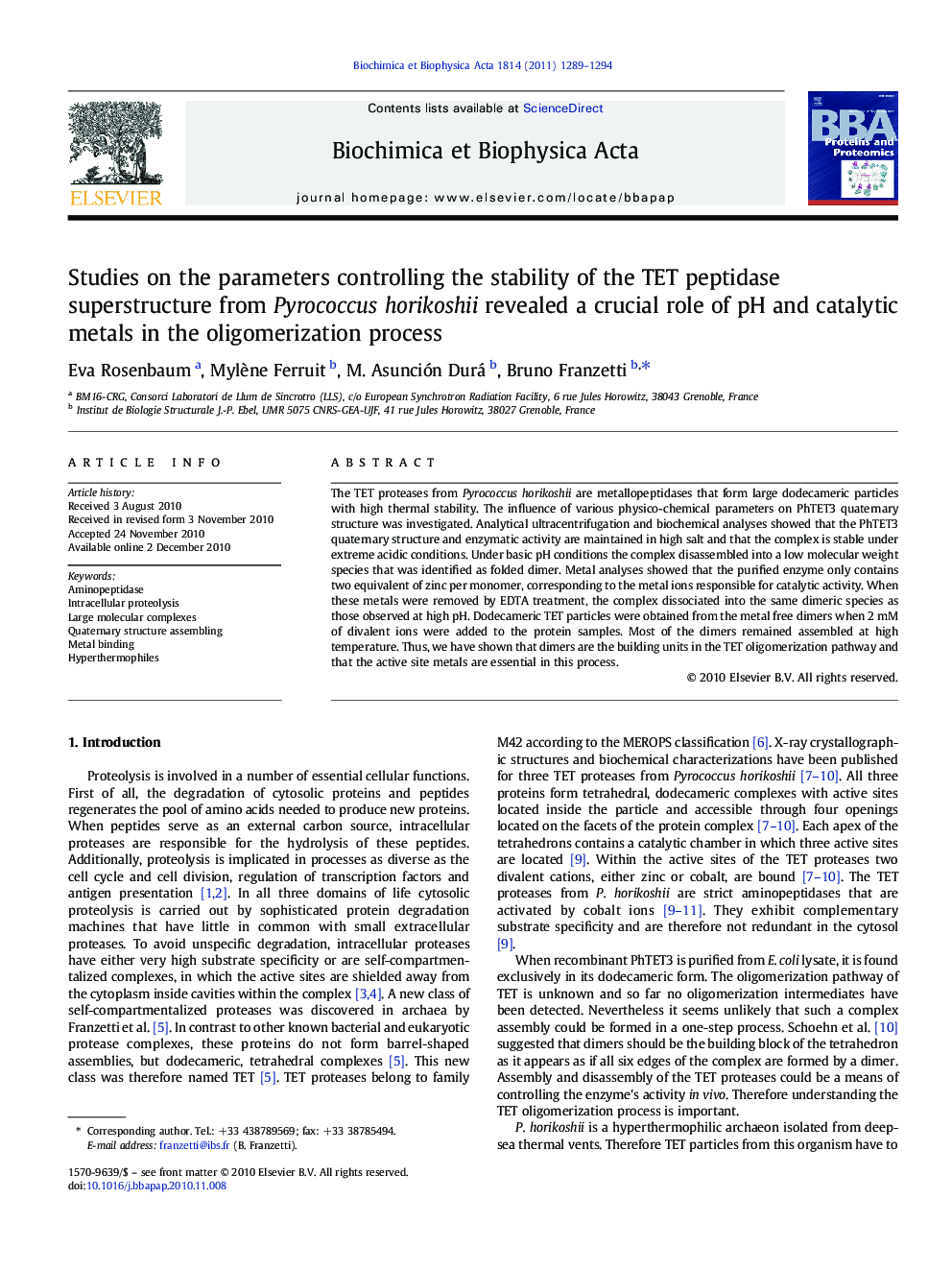| Article ID | Journal | Published Year | Pages | File Type |
|---|---|---|---|---|
| 1178743 | Biochimica et Biophysica Acta (BBA) - Proteins and Proteomics | 2011 | 6 Pages |
The TET proteases from Pyrococcus horikoshii are metallopeptidases that form large dodecameric particles with high thermal stability. The influence of various physico-chemical parameters on PhTET3 quaternary structure was investigated. Analytical ultracentrifugation and biochemical analyses showed that the PhTET3 quaternary structure and enzymatic activity are maintained in high salt and that the complex is stable under extreme acidic conditions. Under basic pH conditions the complex disassembled into a low molecular weight species that was identified as folded dimer. Metal analyses showed that the purified enzyme only contains two equivalent of zinc per monomer, corresponding to the metal ions responsible for catalytic activity. When these metals were removed by EDTA treatment, the complex dissociated into the same dimeric species as those observed at high pH. Dodecameric TET particles were obtained from the metal free dimers when 2 mM of divalent ions were added to the protein samples. Most of the dimers remained assembled at high temperature. Thus, we have shown that dimers are the building units in the TET oligomerization pathway and that the active site metals are essential in this process.
► Dimers are the building blocks of the dodecameric TET protease. ► The co-catalytic metal ions are essential for the oligomerization of the dimers. ► TET dimers assemble in an incremental manner to form the tetrahedral complex.
